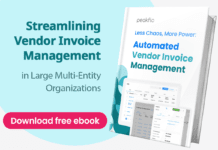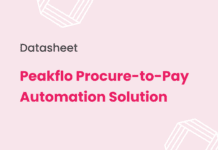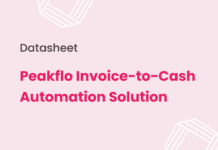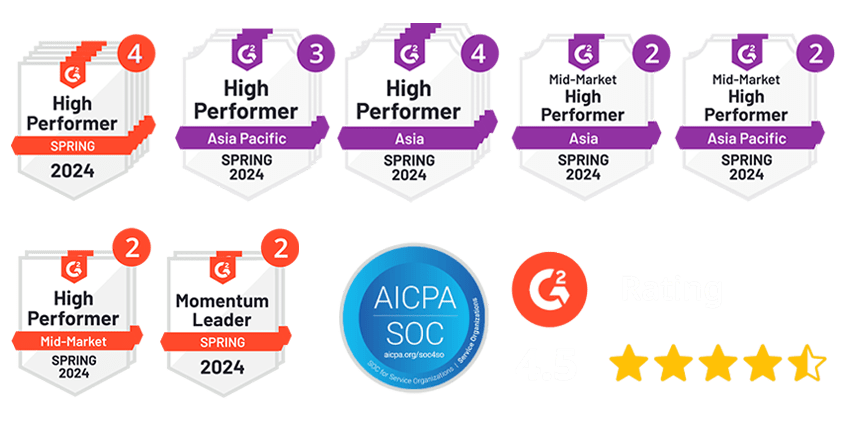Managing expense reports can be tricky for businesses. A missing receipt, a late submission, or a policy violation can cause big problems. These issues often lead to financial errors, wasted time, or even penalties.
For businesses in Singapore, getting expense report compliance right is critical. It’s not just about following tax rules. It also protects your company’s finances and builds trust with your customers and vendors. Yet, many businesses struggle to keep the process smooth and hassle-free.
How can you avoid these challenges while staying compliant? In this blog, we’ll explain the basics, highlight common mistakes, and share ways to simplify compliance. Whether you’re doing this manually or thinking about automation, you’ll find practical tips to make your process better.
What is Expense Report Compliance?
Expense report compliance means making sure that all business expenses follow the company’s rules and meet legal requirements. It’s about ensuring that every dollar spent by employees is tracked, approved, and properly documented. This helps prevent mistakes, fraud, and unnecessary spending.
For example, let’s say your company has a policy that only allows employees to claim meals under $50 for business trips. If an employee submits a receipt for a $75 meal without a valid explanation, that expense would not comply with the policy. Proper compliance ensures such expenses are flagged and handled correctly.
It’s not just about internal rules, though. In Singapore, businesses must also follow tax regulations, like GST reporting. If an expense isn’t documented with the right receipt, it can lead to tax penalties during audits. Compliance ensures you avoid these risks while keeping your finances accurate and transparent.
Now that we’ve covered the basics of expense report compliance, let’s explore why it matters and how it can impact your business.
Why is Expense Report Compliance Important?
Expense report compliance is more than just following rules. It’s about keeping your business safe from costly mistakes and legal trouble. It ensures every expense is fair, follows your company’s policies, and has proper proof, like receipts. This helps keep your finances accurate and stress-free.
- For example, imagine an employee submitting a report with a typo, listing a $10,000 payment instead of $1,000 for a vendor. If this mistake isn’t caught, it could mess up your budget or cause confusion when balancing the books. Compliance processes help catch such errors before they create problems.
- In Singapore, businesses need to follow GST rules. These rules require detailed records for every expense. If receipts are missing or incorrect, your business could face penalties during an audit. Compliance ensures you stay on track and avoid these issues.
- It also creates trust. Employees understand the process, vendors get paid the right amount, and your customers see a company that’s organized and reliable. When compliance is a priority, your business runs smoother, and everyone benefits.
Understanding why compliance is important is just the first step. To make it work in real life, you need a system built on key components.
Components Required for Expense Report Compliance
A good expense report compliance system needs three main elements: clear rules about expenses, proper documentation, and an approval process that works. These steps help everyone stay on the same page and avoid mistakes.
1. Acceptable Expenses and Spending Limits
Employees need to know what they can claim and what they can’t. It’s important to explain which expenses are covered and set limits to keep spending in check. These rules help avoid confusion and make approvals easier.
For example, your policy might allow reimbursements for ride-sharing apps but require employees to choose the most affordable option.
A simple rule could be: “Reimbursements for rides are capped at $30 per trip unless pre-approved.” Clear spending limits like this prevent unnecessary back-and-forth.
2. Importance of Receipts and Documentation
Receipts are proof that an expense actually happened. They make it easy to verify claims and ensure the business stays compliant with tax rules. Employees should always attach receipts and provide a brief explanation for each expense.
Example: An employee buys snacks and water for a team meeting. They should upload the receipt and include a note saying, “Snacks for Monday’s project brainstorming session.” This makes the expense clear and easy to approve without questions.
3. Processes for Authorization and Approval
Every claim needs to be reviewed and approved. Employees should know who will review their reports and how long it will take. Having a set process for approvals keeps things organized and prevents delays.
Example: Your travel policy might say: “Travel expenses must be submitted to the department head for approval within three days of the trip.” If an employee submits a claim for a hotel stay, the manager can review it promptly, making sure the cost and reason are within policy. Once approved, the finance team can process the reimbursement quickly.
These components make compliance straightforward for employees and efficient for the finance team. When rules are clear, documentation is complete, and approvals are structured, the entire process works better for everyone involved.
Now that we understand the components of expense report compliance, let’s look at the common challenges businesses face when managing expense reports and staying compliant.
Common Challenges in Expense Report Compliance
Getting expense report compliance right isn’t always easy. Businesses often run into challenges that slow things down, cause errors, or even lead to penalties. Let’s break down some common issues and how they can affect your team.
1. Delayed Submissions
Employees often wait until the last minute to submit their expense reports. This creates unnecessary stress for everyone involved. This not only delays reimbursements but also makes it hard for the finance team to close the books accurately.
Example: An employee goes on a business trip but doesn’t file their expenses for weeks. By the time they remember, receipts are missing, and details are fuzzy.
2. Missing or Incomplete Documentation
One of the most common issues is incomplete records. Employees might forget to attach a receipt, or they might leave out key details, like the purpose of a meeting or who was there. Without the right documentation, finance teams can’t confirm if the expense is valid, which creates extra work during audits.
Example: An employee might claim a lunch expense for $50 but not explain if it was a personal meal or a work-related meeting.
3. Policy Violations
Sometimes, employees don’t fully understand expense policies, which can lead to unintentional mistakes. If not caught early, policy breaches can slow down approvals and even cause budgeting issues.
Example: A company might have a rule that caps hotel stays at $200 per night. But an employee might book a luxury hotel for $350, thinking it’s acceptable because it’s for work.
4. Human Errors
When expense reports are done manually, mistakes are bound to happen. A simple typo—like entering $1,500 instead of $150—can throw off the entire report. These errors may seem small, but they can lead to big problems during audits or when reconciling accounts. Manual processes also make it easier to accidentally approve duplicate claims, which eats into your budget unnecessarily.
5. Slow Approval Processes
Sometimes, the delay isn’t with employees—it’s with the approval process itself. If reports have to go through multiple levels of sign-off, or if managers forget to review them, everything slows down.
Example: An employee might submit an expense report on time, but it gets stuck waiting for their manager’s approval, delaying reimbursement for weeks.
6. Risk of Fraud
While fraudulent claims are not the most common issue, they do happen. Employees might submit personal expenses disguised as business costs. These kinds of claims can slip through without proper checks, costing the company money and eroding trust within the team.
Example: Someone might claim a dinner with friends as a “client meeting” and attach a vague receipt to justify it.
7. Compliance with Local Tax Rules
If you operate in a region like Singapore, you’re familiar with how strict GST regulations can be. Every expense needs to be properly documented and categorized to stay compliant. Staying on top of these rules is a challenge, especially for businesses with global operations.
Example: You don’t keep receipts for travel expenses. You might run into issues during an audit.
These challenges don’t just slow things down—they can lead to financial losses and frustration for employees. In the next section, we’ll explore practical ways to tackle these problems and create a smooth, compliant expense reporting system.
Best Practices for Ensuring Expense Report Compliance
Expense report compliance doesn’t have to be stressful. By following a few practical steps, you can make the process easier for your employees and finance team. Let’s look at the best practices that help businesses stay on track.
1. Keep Expense Policies Clear
Your policies should be simple and easy to follow. Employees should know what they can claim, how much they can spend, and what proof they need to provide. Clear guidelines prevent confusion and reduce mistakes.
Example: Your policy might state: “Attach itemized receipts for all expenses above $10. Include the date, amount, and vendor name for every claim.” This ensures employees know exactly what’s required.
2. Train Employees Regularly
Training is key to avoiding misunderstandings. Employees need to know how to submit their reports, what counts as a valid claim, and how to stick to the rules. Regular sessions can highlight common mistakes and make the process more accessible.
Example: You can show employees how to submit a travel expense claim. Walk them through the process step by step, from attaching receipts to writing a short explanation about the purpose of the trip. This will help build confidence and reduce errors.
3. Use Automation Tools
Manual processes are time-consuming and prone to mistakes. Expense management automation tools make the process faster and more accurate. They can flag missing receipts, catch duplicate entries, and check if claims follow your policies.
Example: Employees can upload photos of their receipts to an app. The tool automatically extracts the details, such as the amount and vendor name, saving time and reducing manual errors.
4. Set Firm Deadlines
Deadlines keep the process organized. Employees need to know when to submit their reports, and managers should review and approve them promptly. This prevents delays and avoids backlogs.
Example: Your company could enforce a rule: “Submit expense reports within seven days of making a purchase. Managers must approve them within three days.” Deadlines like these keep the system running smoothly.
5. Audit Expense Reports Regularly
Audits help identify errors, policy violations, or even fraudulent claims. Regular checks ensure your team follows the rules and keeps the system fair for everyone.
Example: During an audit, you might notice an employee is repeatedly submitting claims without receipts. Addressing this early avoids bigger issues later and helps reinforce compliance.
6. Encourage Questions
Sometimes employees aren’t sure if an expense is valid or if it meets company policy. If they don’t ask for help, they might submit incorrect claims. Make it easy for them to reach out and get answers.
Example: An employee might wonder if a last-minute taxi ride for a client meeting is reimbursable. By encouraging open communication, they can clarify this before filing their report, reducing mistakes.
Using these best practices, you can create a simple, efficient system for managing expenses. This system saves time, reduces errors, and helps your team stay compliant. In the next section, we’ll explore how technology can further streamline the process.
How Technology Can Simplify Expense Report Compliance
Managing expense reports manually can be slow and stressful. Technology helps by automating many of the tasks, reducing mistakes, and making things easier for both employees and finance teams. With the right tools, businesses can improve compliance and save time.
1. Automatic Policy Checks
Expense tools can instantly check whether claims follow your company’s rules. They flag expenses that exceed set limits or are missing receipts, helping employees correct mistakes right away instead of waiting for their manager to catch them later.
Example: Your policy caps meal expenses at $50. The system will flag a $70 dinner claim. The employee can immediately explain or adjust the claim before submitting it. This avoids delays during expense approvals.
2. Faster Approvals
Getting approvals can sometimes take too long, especially if managers are busy. Automated tools speed this up by sending reminders and allowing managers to approve claims quickly, even from their phones.
Example: Imagine a manager who is away at a conference and receives an email reminder about pending approvals. Instead of waiting until they’re back in the office, they can use their phone to review and approve the claims in minutes, keeping the process moving smoothly.
3. Better Record Keeping
With expense management tools, all reports, receipts, and approvals are stored in one secure place. This means you can easily find any document you need, whether it’s for reconciling accounts or an audit.
Example: If the finance team needs receipts from last month’s marketing expenses, they can access them instantly in the system. There’s no need to search through piles of paper or scattered emails.
4. Spotting Fraud Early
Advanced expense tools can also help detect unusual patterns that might indicate fraud. They can flag duplicate claims, expenses that fall outside work hours, or suspicious amounts.
Example: The system might notice an employee claiming the same hotel receipt for multiple trips. By catching this early, the company can address it quickly and avoid financial losses.
5. Integration with Accounting Software
Modern expense tools connect directly with accounting systems, so everything stays accurate and up to date. When an expense is approved, it’s automatically recorded in your financial software. This reduces manual work and the chance of errors.
Example: When an employee’s travel expense is approved, it is categorized and synced with the accounting software. This means less paperwork for the finance team and more accurate financial records.
Using technology to manage expense reports not only saves time but also reduces stress and keeps your processes organized.
How Peakflo Can Help in Expense Report Compliance
Managing expense report compliance can be time-consuming and difficult. You have to track receipts, follow strict rules, and ensure everything is accurate for reporting. Peakflo makes it easier by automating travel and expense management, keeping records organized, reducing errors, and ensuring compliance. Here’s how Peakflo simplifies the process:
1. Automated Expense Reporting with AI-Powered OCR
Peakflo uses AI-powered OCR to automate expense reporting. It scans receipts and invoices, capturing key details like amounts and vendor names. This takes away the need for manual data entry. The system also matches receipts with expense reports and flags any mistakes, so everything stays accurate and compliant.
2. Configurable Expense Policies for Easy Compliance
Peakflo makes it simple to set custom expense policies for travel and other business expenses. These policies apply to all employees to keep things consistent. You can also manage currency conversion limits, and Peakflo will alert employees if they exceed company rules, making sure your expenses stay on track.
3. Streamlined Approval Workflow Automation
Peakflo automates the approval process to speed things up. It routes approvals based on expense categories and who is responsible, ensuring the right person reviews each expense. With customizable approval levels, Peakflo keeps things moving without delays, making sure everything is approved on time.
4. Efficient Per Diem Expense Management
Managing per diem expenses for travel is straightforward with Peakflo. You can set custom limits based on where employees are traveling and how long they’ll be there. This keeps expenses within company rules, whether the trip is for a full day or just part of one.
Conclusion
Expense report compliance is more than just a financial requirement—it’s about keeping your business organized and running smoothly. When done right, it helps avoid mistakes, saves valuable time, and keeps everyone on the same page. However, managing expense report compliance manually can feel overwhelming.
Peakflo makes travel and expense management simpler, faster, and more accurate. By automating key tasks like expense report compliance, approvals, and invoice processing, Peakflo helps you avoid mistakes and save time. It’s designed to give your team the tools they need to stay on track and compliant, all while making the process easier for everyone involved.
No more delays or confusion when it comes to approvals, tracking expenses, or managing vendor relationships. Peakflo streamlines it all. Ready to take the stress out of travel and expense management? Start with Peakflo today and experience how much smoother your workflows can be.









![Why AI Sales Calls Are Making Good Sales Reps Even Better [2025 Guide] ai sales calls](https://cdn-kmjmp.nitrocdn.com/YvtqmrsiHUxqerlSiZgbfzqqTARWTElr/assets/images/optimized/rev-834053b/blog.peakflo.co/wp-content/uploads/2025/09/65168cf6-3001-4733-8cbc-12d5684cf449-218x150.webp)

































